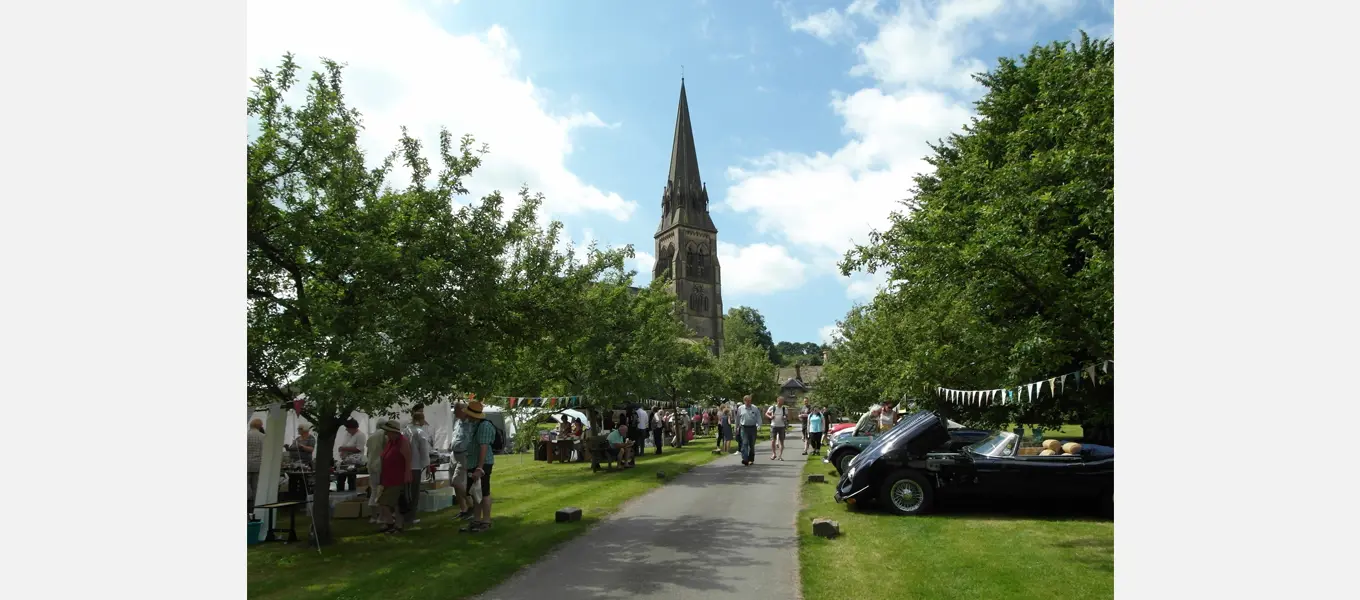As you pass through the gates of modern-day Edensor, a triangular village green greets you. It’s surrounded by the chocolate box houses of Chatsworth’s model village, and overlooked by the parish church. It’s a nice place to sit on a bench and take in the beautiful surroundings. If you’ve got time, maybe you’ll get inquisitive and approach the small stone slab which lays within the grass of this green. If you do this, you might be surprised to read the words ‘Edensor School’ when there doesn’t appear to a building matching this description in the vicinity.
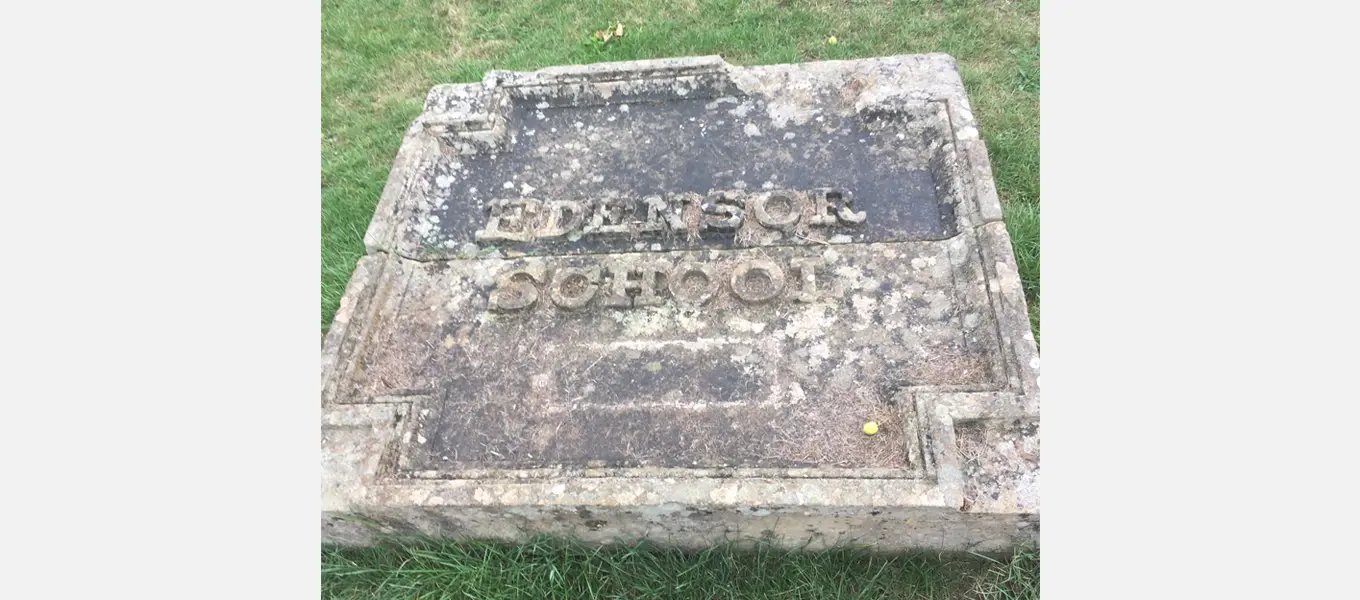
In years gone by, this green was, in fact, the site of a school. In addition to the plaque, a tree was planted by Deborah Cavendish, Duchess of Devonshire, to commemorate the school also once stood in this place. Unfortunately, last summer strong winds brought the tree over and now all that is left is a stump.
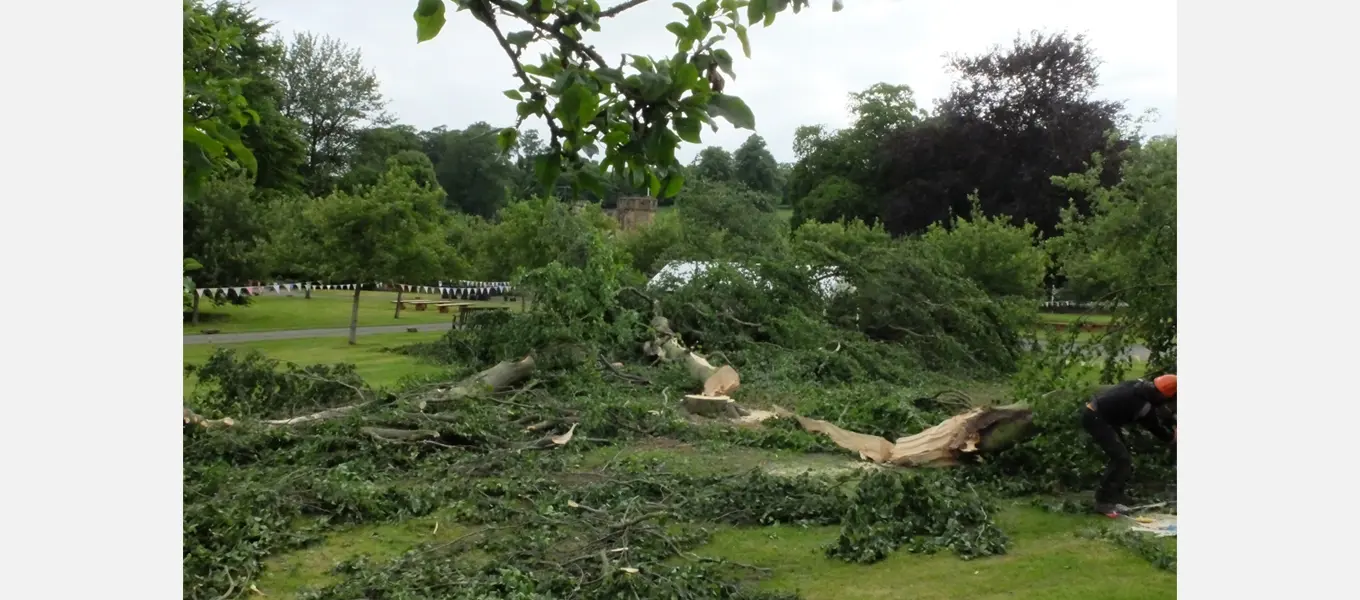
If you’re busy, or distracted by the other sights, you might not notice either the tree stump or the plaque.
Lately, however, the hot weather caused clear lines to appear in the grass of this green. These unmistakable markers known as ‘parch marks’ have brought to life the history of this space, highlighting that it has a past just as interesting as the other buildings surrounding it, and providing an exciting visual representation of a school which was once a hub for the local community.
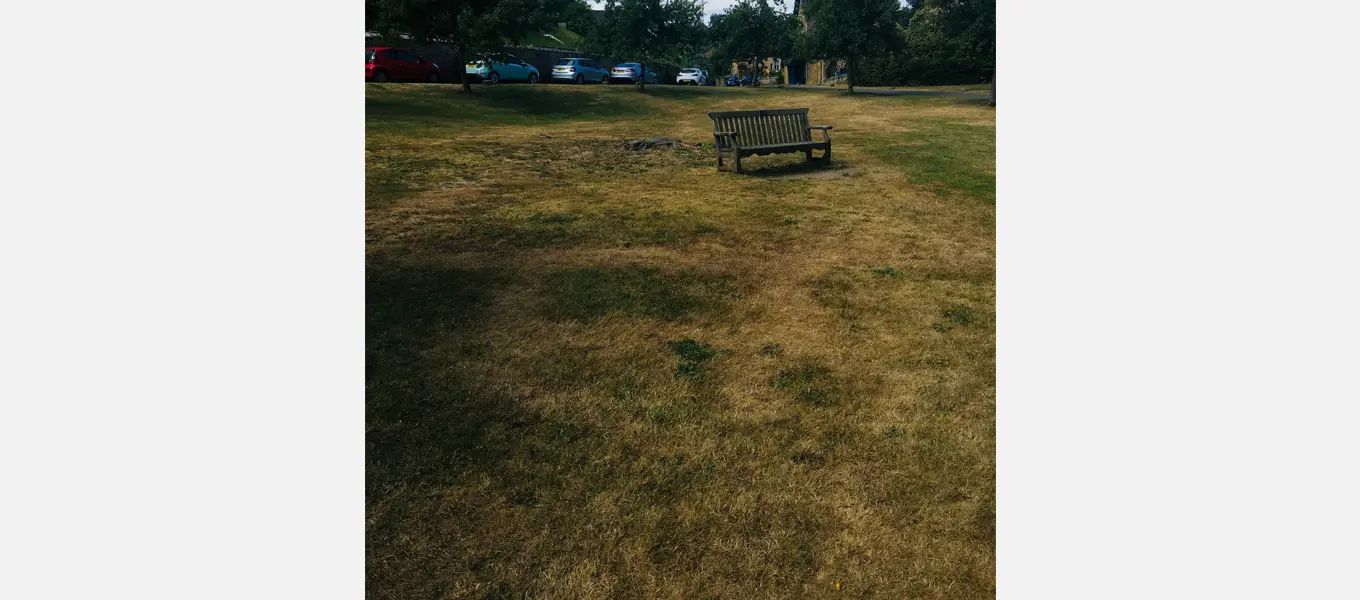
Edensor school was founded in the 18th century by a man named John Philips. Phillips had served as Housekeeper at Chatsworth, but his will, dated 3rd March 1734, suggests that he was a wealthy man in his own right. It was in this will that Phillips bequeathed money for the school premises and for the salary of a school master. A survey of the Chatsworth estate taken 50 years later, in 1785, records Edensor school sitting just in front of the church. Together, these two institutions operated at the centre of village life, not only geographically, but also spiritually. They not only provided education to the local community, but they also functioned as spaces for social interaction and inclusion.
When the 6th Duke re-modelled the estate village in the 19th century, the school was rebuilt. It remained in its original location at the heart of the village. Yet, the high street around it was altered, and the newly-constructed entrance to the village faced directly onto the school and the church behind. They were the first buildings people would have seen as they walked into Edensor and this is indicative of their spiritual and symbolic importance. Now in pride of place, the new school consisted of rectangular-shaped building, with a small entrance-porch at the east, and a walled yard at the back, facing west. It is the foundations of this new building which have shown up as parch marks.
The new school could accommodate more children than the previous building. At any given time, up to 60 boys and 20 infants would have attended the premises. During the first world war, six Belgian children were added to this number. They were refugees, and had left their home-country with their families after the German invasion. When they arrived at Chatsworth in September 1914, they did not speak a word of English. Their mother-tongue was Flemish which, unfortunately, was not a language any of the teachers or assistants working at the school could speak. Nevertheless, two of the teachers did speak French. The boys were therefore given extra tuition in this language in the hopes that they would soon be able to communicate and socialise with other members of their new community.
As a space of learning and social interaction, the school not only catered for children. In 1893, 33 men working on the Chatsworth estate benefited from a first-aid training course which was delivered in the school by the St John’s ambulance association. During this time, manual labour on the estate could be very dangerous, and the first-aid training would have helped the workers to deal with workplace accidents.
By the late 1940s, life on the estate had changed greatly. Motor vehicles, which had once been a rarity, were now more commonplace. It was easier than ever before to travel from Edensor to the nearby towns and villages. While settlements like Edensor had once needed their own individual facilities, better transportation meant that this was no longer the case. The school in nearby Pilsley was bigger than the one in Edensor, and it could admit more pupils. The one at Edensor, therefore, was no longer needed by the children of the village. Similarly, the adult villagers found larger and better equipped facilities elsewhere to host training courses, clubs and societies.
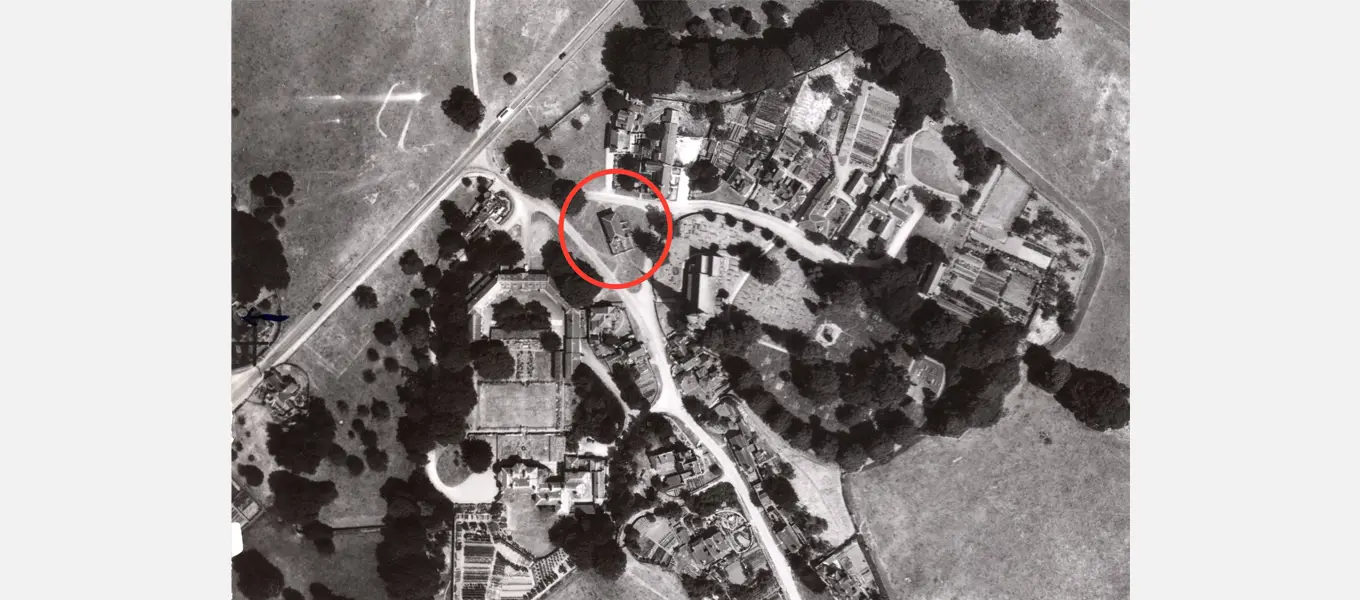
In 1950, the school was torn down, and its surroundings were converted into the village green which exists today. Yet, like the school before it, the green still operates as a hub for the local community, perhaps due to its central position within the village. Today, it is a place for picnics, for children to play, and it is used as one of the key sites for the annual summer fair known as Edensor Day.
